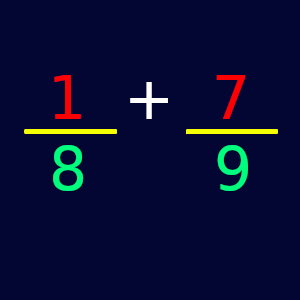Fractions are numbers, actually known as rational numbers For any fraction x/y where x and y are integers and y ≠ 0, you can perform the four basic arithmetic operations: addition, subtraction, multiplication, and division However, since a fraction involves two numbers, it does require some operational manipulation depending on the nature of the digits involved in the operation – whether the numbers are the same or different, as well as the type of operation You’ll need to follow specific rules for handling the numerators and denominators.
Addition and subtraction of fractions
Class 1: Same denominators
In this case, the numerators are added together and the same denominator remains:
Example with sum:
Example with subtraction:
Class 2: Different Denominators
The numerator of the result is the sum of the cross-multiplication of the fractions and the denominator of the result is the multiplication of the denominators of the fractions:
Example with sum:
Example with subtraction:

